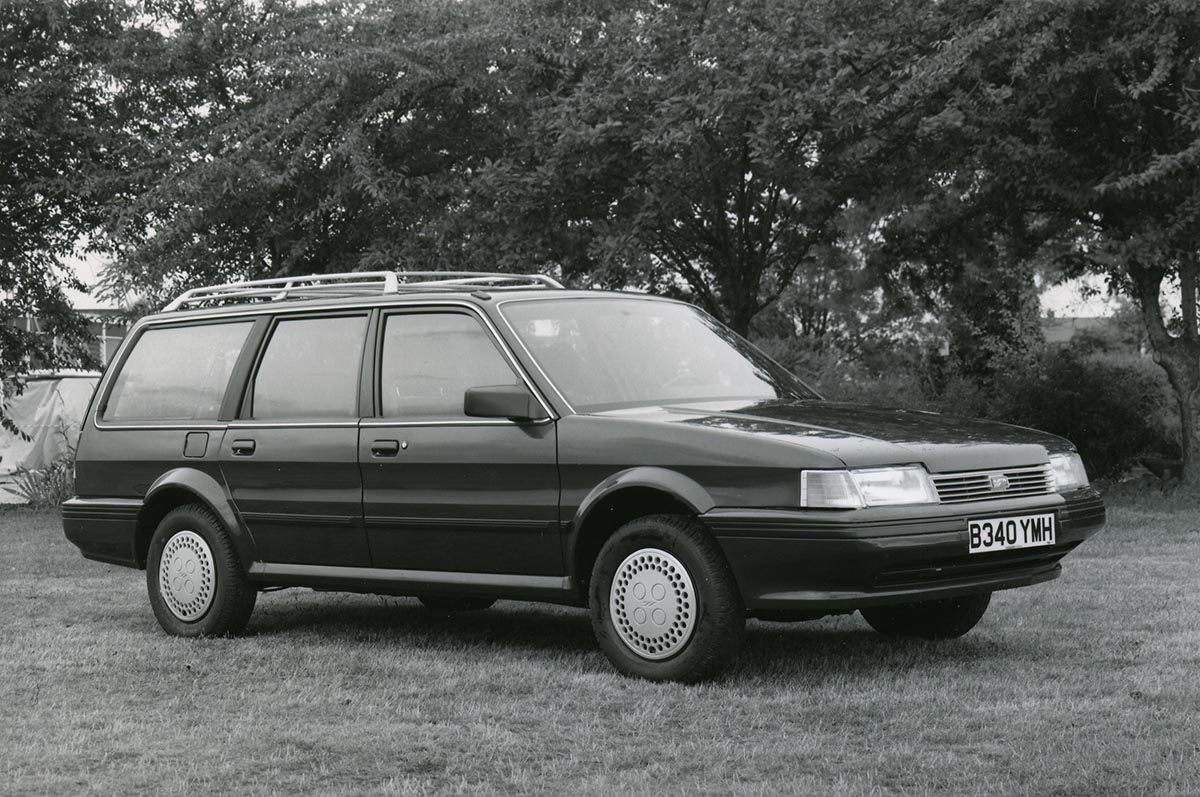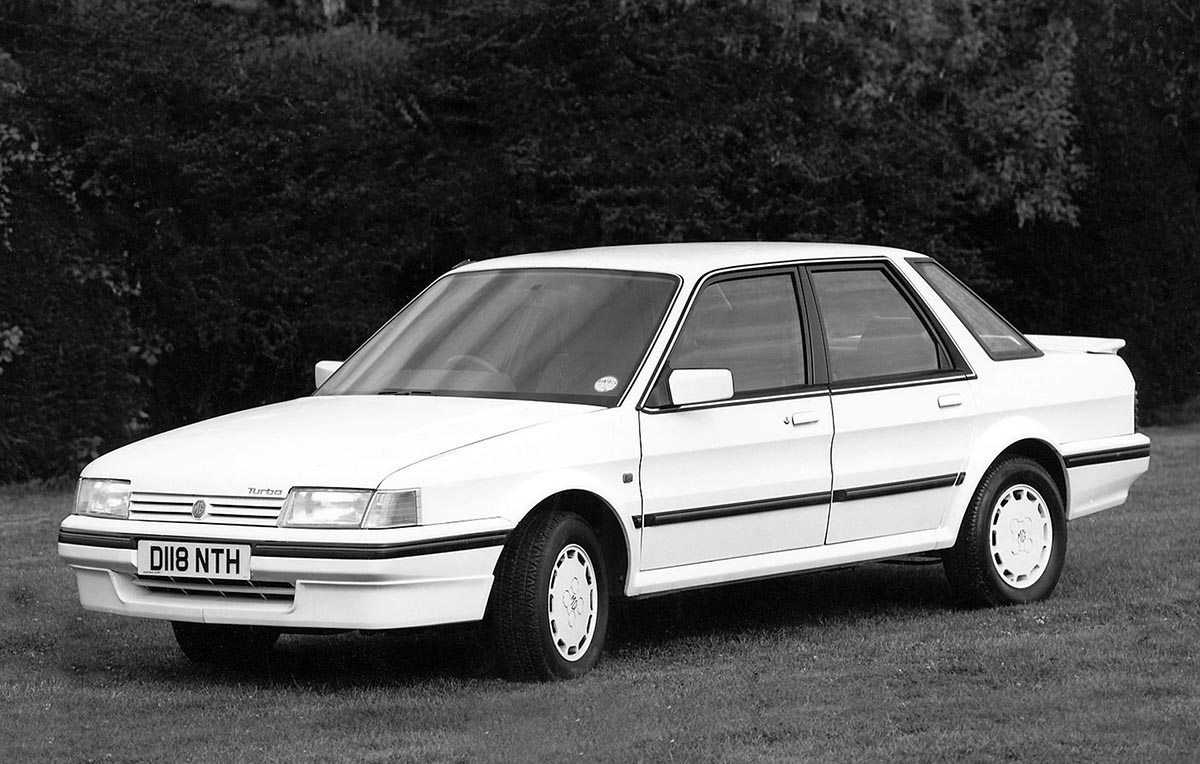The misunderstood Montego
If ever a car got an unfair crack at the whip, it’s the Austin Montego. Through a turbulent storm of poor management, underfunding, workforce strife, and poor quality, what could and should have been a high water mark in British mainstream car design ended up as a mishmash. Even so, the Montego still managed to salvage some engineering pride from all of this and become a staple of British family and fleet life for a whole decade.
The upsides of the Montego came in a variety of elements. Its front-wheel drive packaging put it ahead of some rivals, notably the Ford Sierra, that still stuck with rear-drive. This layout already seemed antiquated for a modern family car of the 1980s as it infringed on boot and rear seat space, while a front-drive design could offer more capacity along with just as good driving dynamics. Vauxhall had proved this to great effect with its second-generation Cavalier, and Austin (and British Leyland before it) had been a pioneer of front-drive with the likes of the 1800, Maxi, and Princess in the mid-size market.
Austin also had a brand new engine for the Montego in the shape of the S-Series to replace the ageing R-Series of engines. It was universally praised for its smoothness and good power, though it also developed a reputation for oil leaks further down the line. Other engines in the line-up included the 1.3-litre A-Series that dated back to the 1950s, the 2.0-litre O-Series, and a 2.0-litre diesel developed with Perkins.

The Montego had been partly designed using CAD (computer aided design), which was considered revolutionary at the time. Adding to the high tech appeal of the Montego were its digital dash and the ‘talking’ dash for early models that could warn the driver with various alerts such as not putting on a seat belt. However, this was not the most reliable bit of tech and was dropped from the range not that long after the 1984 launch.

While the Montego’s mechanical set-up was much more conventional than previous models from Austin, using a MacPherson strut front suspension and abandoning the Hydragas set-up of the Princess and Ambassador, it still offered interesting design features. Notable among these were windscreen wipers that sat under the rear edge of the bonnet when in the parked position. This made the car more aerodynamic for better economy and refinement.
Not long after the four-door saloon was launched, Austin added a large estate version of the Montego that could be ordered as a seven-seater. This used two rear-facing seats in the boot in a similar fashion to that offered by Volvo. It made the Montego Estate a very useful family car and the wagon came with self-levelling rear suspension to make sure it stayed on an even keel when fully loaded.

In many ways, the estate was a happier looking car than the Montego saloon. That’s no surprise when you learn the saloon had been designed to use the doors from the Maestro hatch in a bid to cut costs to the minimum. However, this also necessitated the extra windows in the rear pillars of the Montego to give it a reasonable form. Not everyone was so happy with this look and designer Roy Axe has said previously he would rather have scrapped the entire styling of the Montego and started from fresh.

However, that was never an option given that, by the time Axe became the fifth designer to take on the Montego project, the car was slated for production in less than 12 months. Austin needed the money coming in and the British government was in no mood to further bail out this British car company.
Despite all of this going on in the background, the Montego was a decent contender to its main rivals from Ford and Vauxhall in the UK. It never made much of an impression outside of the UK’s shores, but company fleets took to the diesel model for its economy and ability to plod along for many miles. In estate form, the diesel Montego was the perfect rep’s car for traipsing up and down motorways.

However, Austin had a plan to add some verve to the Montego range when it launched the MG version. With a turbocharged 150bhp 2.0-litre engine, it became the fastest ever road car to wear the MG badge, capable of 0-60mph in 7.3 seconds and a top speed of 126mph – 1mph faster than the claimed top speed of an MGB GT V8. There was also a non-turbo 2.0i version of the MG Montego with 115bhp that dealt with 0-60mph in a more leisurely 8.9 seconds.

The MG models were well liked by the motoring press for their performance and good value compared to the likes of the Vauxhall Cavalier SRI. Yet, even when the MGs were launched in 1985, the Montego was beginning to look and feel dated next to a number of rivals. This perception held back the Austin from greater sales success, and this was not assisted by the ongoing management and industrial dramas at the factory. And yet, the Montego survived in production for a whole decade and only left the new car sales charts in the UK in 1994. It also enjoyed a prolonged life with tiny sales in Trinidad and Tobago up to 2000.
Ultimately, what did for the Montego was not the fault of the car itself but delays that meant it was too late coming to market. Had it been launched around 1980 as was originally intended to replace the Princess and Ital ranges, the Montego would have felt like a much more ground-breaking car. It would also have given the Montego a welcome head start over the Ford Sierra. That wasn’t to be and, instead, the Montego was doomed to be misunderstood and maligned, sometimes unfairly and sometimes rightly, to the point it joined the long list of British car industry could-have-been contenders.
What are your thoughts on this piece of British automotive design history? Perhaps you have your own story to tell of the Montego, we'd love to hear it! Tell us in the comments below.

COMMENT